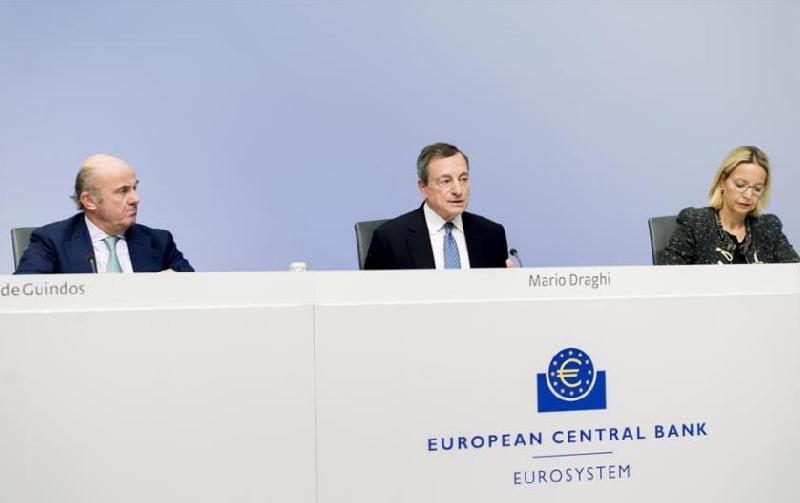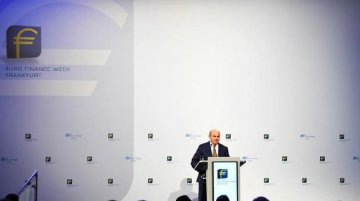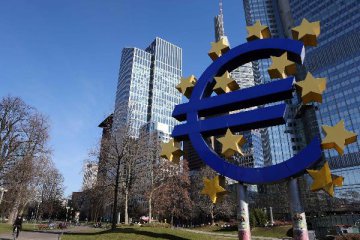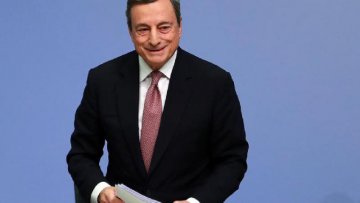
European Central Bank (ECB) President Mario Draghi (C) and Vice-President Luis de Guindos (L) attend a press conference at the ECB headquarters in Frankfurt, Germany, on Dec. 13, 2018. The ECB Thursday announced to end its massive four-year asset purchase programme (APP), but keep the key interest rates for the euro area unchanged, as most analysts expected.
The European Central Bank (ECB) Thursday announced to end its massive four-year asset purchase programme (APP), but keep the key interest rates for the euro area unchanged, as most analysts expected.
Following a two-day governing council meeting, the ECB took a crucial step towards normalizing policy with formally announcing the bond-buying exit after almost four years and 2.6 trillion euros (2.95 trillion U.S. dollars) asset purchases.
Eurozone growth has accelerated markedly over the past three years, with some estimates suggesting that QE contributed 0.75 percentage points a year to the average 2.25 percent annual growth rate.
However, the ECB's QE program has been under strong pressure from some eurozone countries, led by Germany, that were uncomfortable about severely bloating the ECB's balance sheet since it launched its quantitative easing (QE)program in March of 2015.
With the end of net bond-buying lifting prominence of reinvestment plan, investors and analysts are trying to gauge what the reinvestment plan might look like. The ECB Thursday stated that it will reinvest the principal payments from maturing securities purchased under the APP for an extended period of time past the date when it starts raising the key ECB interest rates.
Analysts pointed that the ECB would hold a large-scale balance sheet for a very long time.
As most of the eurozone data released since last ECB's policy meeting point to the fact that economy is slowing down, the ECB is broadly expected to cut its eurozone growth forecast at Thursday's monetary policy meeting.
In December 2018 Eurosystem staff macroeconomic projections for the euro area, the ECB lowered its GDP growth outlook for 2018 to 1.9 percent from 2.0 percent in September, and cut its 2019 forecast to 1.7 percent from the previous projections of 1.8 percent, as well as remained unchanged for 2020.
Meanwhile, the central bank expected the annual HICP inflation in the euro area at 1.8 percent, 1.6 percent and 1.7 percent in 2018, 2019 and 2020 respectively. Compared with the September projections, the outlook has been revised down slightly for 2019, up 0.1 percentage point for 2018 and remains unchanged for 2020.
The ECB President Mario Draghi admitted downside risk of the Eurozone economy at the press conference. "The risks surrounding the euro area growth outlook can still be assessed as broadly balanced. However, the balance of risks is moving to the downside owing to the persistence of uncertainties related to geopolitical factors, the threat of protectionism, vulnerabilities in emerging markets and financial market volatility," he said.
The Euro slump against the U.S. dollar on Thursday on Draghi's downside risk on growth.
At Thursday's ECB meeting, it was decided that the Eurozone base interest rate will remain at 0.00 percent, with the marginal lending rate and deposit rate remaining at 0.25 percent and minus 0.40 percent respectively. (1 euro = 1.13 U.S. dollars)






















Latest comments